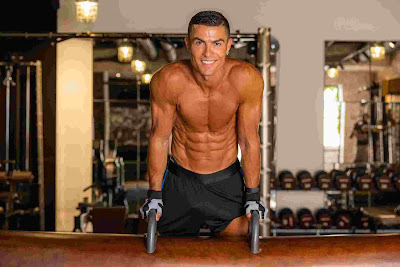Tricks & tips : gain weight and build muscle
Of course, it’s possible to gain weight and build muscle with or without the help of sports websites. But they can be great resources if you know how to use them correctly. This post will explain what the best sports websites are and why they matter, as well as discuss 8 ways that you can benefit from these resources when it comes to building muscle and gaining weight.
1) Strength training
For strong and long-lasting muscles, you want to lift weights that are heavy enough for you to work as hard as possible on each repetition. For most people that's 60% of your one-rep max. What's your one-rep max? If you don't know it, take a look at our post How to Measure Your One Rep Max to find out. Incorporate high-intensity cardio in your routine: High-intensity cardiovascular exercise can help strengthen your heart muscle and make it more efficient. However, if you have heart disease or severe problems with blood circulation then it is best to get advice from a qualified health professional before beginning any new fitness regimen.
2) Lifting heavy weights
Although more and more people are starting to exercise, you’ll find that many stick to moderate-intensity exercise. That’s because it’s easy—you can talk on your phone or watch TV while getting your heart rate up. But if you want to lose weight (and reap other rewards like building muscle), high-intensity interval training is one of our experts’ favorite workout routines. It involves short bursts of intense activity alternated with periods of rest over a prescribed amount of time—and research shows it leads to better results than longer workouts. Get started with these exercises!
3) Fat burning
Before you can get started with a fat-burning program, you need to know how many calories your body is using. This requires an understanding of basal metabolic rate (BMR), which refers to how many calories you use on a daily basis just to maintain basic functions like breathing and circulating blood. To estimate your BMR, take into account your height, weight, age and gender. If you want to lose weight, then an effective strategy would be subtracting 500 from that number for women and 500 more for men (this takes into account slightly lower activity levels for women). Once you’ve arrived at your estimated BMR number, it’s time to calculate calorie goals—which is far easier than it sounds thanks to some simple math.
4) Getting more calories from your diet
There are a number of ways to get more calories in your diet without going overboard, particularly if you find yourself lacking energy during your runs. Aim for 100-300 extra calories per day. That can come from peanut butter on apples or whole wheat bread in place of white bread, for example. Choosing foods with higher calorie counts will help you hit your mark while also giving you more flavor options and more sustained energy throughout your run. If you want an easy way to monitor how many calories you’re taking in during each meal, download a calorie tracker app onto your phone.
5) Carbohydrates timing
The thing about carbs is that they get stored as glycogen in your muscles and liver. Since different activities use different amounts of glycogen, it can be a good idea to limit or eat more carbohydrates on days when you know you’ll be using a lot of energy. Many athletes have found success with carb cycling, which involves eating low-carb on days when they train and high-carb on rest days or off days. One easy way to do that is by following the traditional bodybuilding feed day routine, which calls for low-carb days during workouts and high-carb days on rest days.
6) Cardio exercise
Cardiovascular exercise includes all exercises that increase your heart rate, make you breathe harder and get your body moving. This type of exercise is important for weight loss because it burns calories and increases your metabolic rate so you burn more calories even when you're at rest. It's also essential for heart health and can help reduce high blood pressure and cholesterol levels. The American Heart Association recommends 25 minutes a day of vigorous exercise to improve cardiovascular fitness and overall health (you can break up longer workouts into four-five minute chunks). Try jogging, cycling or swimming in place of an after-work meeting or sit around playing video games with friends; it doesn't matter what form it takes as long as you achieve it every day.
7) Creatine supplements
The best way to increase muscle mass fast is to combine resistance training and creatine supplements. By increasing your strength, you'll also be able to burn more calories during workouts, which will help you lose weight faster. In a study conducted at McMaster University in Canada, researchers found that students who took 5 grams of creatine per day had increased their bench press by an average of 24 percent compared to students who didn't take creatine. Creatine supplementation is relatively safe when taken in low doses; however, high doses can cause gastrointestinal side effects such as nausea and diarrhea. Read up on how to use creatine properly before taking it for maximum benefits and minimal side effects.
8) Protein powders and shakes
Look to protein powders and shakes for a good, low-calorie
way to add muscle. For example, bulking doesn’t have to mean hitting McDonald’s
on a daily basis. You can get more than 700 calories of protein per day with
just three scoops of whey powder. To avoid excess fat and keep your gains lean,
make sure you don’t go above 1 gram of carbs per pound per day. Additionally,
drink plenty of water during your bulk to stay hydrated and keep your system
running smoothly (and not fat).

